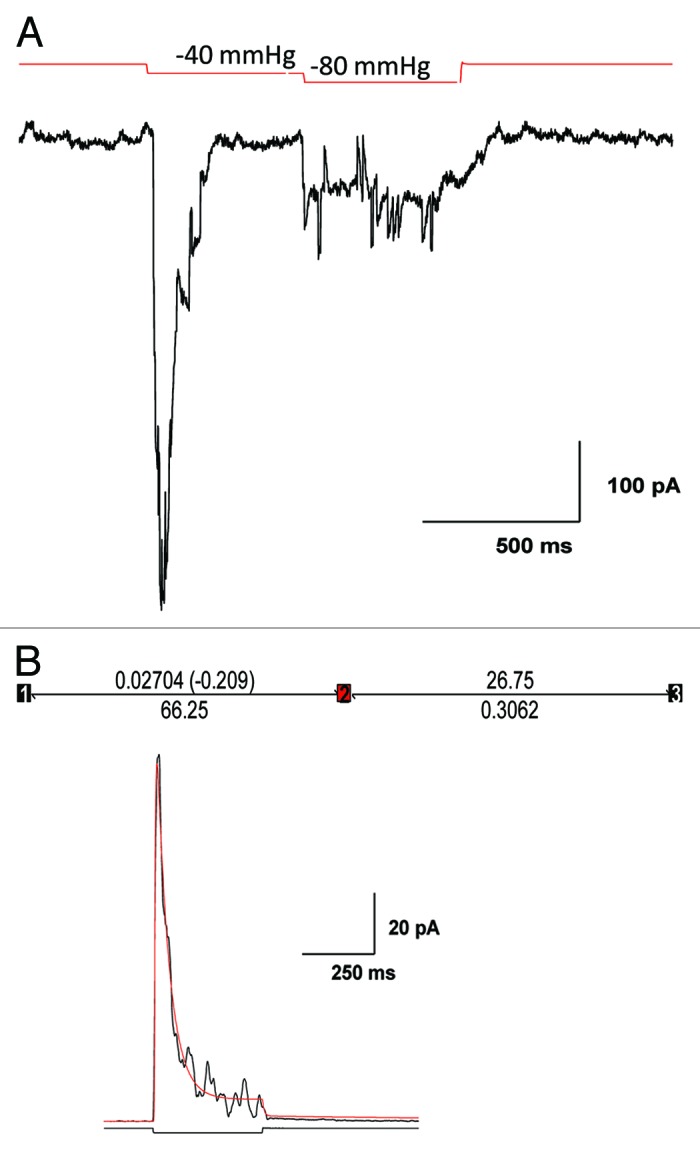
Figure 1. Inactivation in cell-attached patches. Panel (A) shows the results of a two-step staircase stimulus where the multichannel currents are shown to inactivate rather than adapt. The first step activates the channels and they proceed to desensitize. If desensitization were caused by adaptation of the stimulus the second step would produce a transient current similar to the first step. In general the second step produced very little current and in the example shown, the second step produced a complete conversion of the transient current to a non-inactivating current. Panel (B) shows the state model used to fit the transient and the optimal rate constants were obtained from the MAC routine in QUB. The rate constant k12 = k12 *exp(q*P) where q is the pressure sensitivity shown in parentheses after the constant k12 and k12 is the rat at zero pressure. For the fitted data, note that once the stimulus ends the recorded current trace is smaller than that of the model for many seconds as drop in pressure wrinkled the membrane and it took time to reanneal.6
